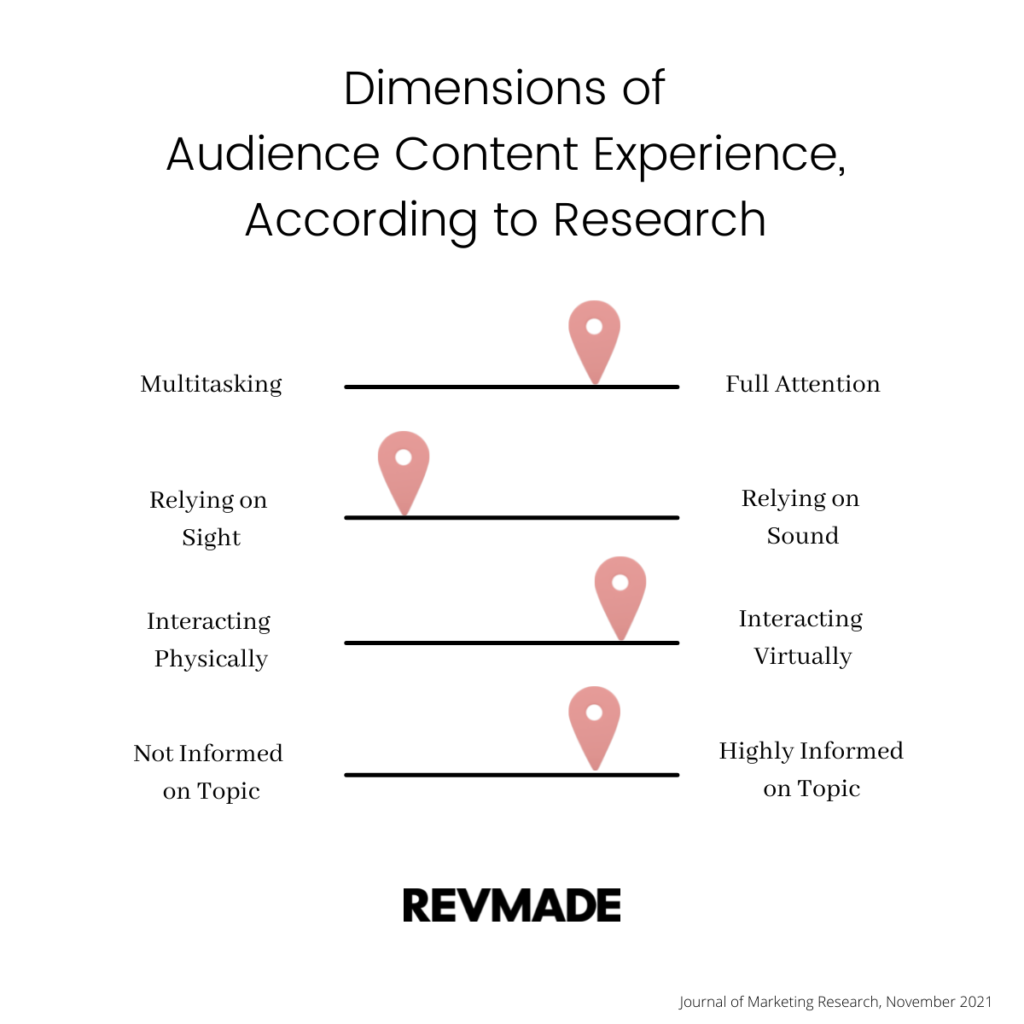Is this content right for that channel? New research says definitely maybe
Less can be more, as long as you calibrate where and how you publish contentRevmade regularly scours the internet for new studies that offer important insights for marketers. Then we write them up for you in as few words as possible. (Want to get them emailed to you? Sign up here.)
There are infinite combinations of where and how to present information. And each channel and communication medium has norms and nuances that should be taken into account prior to including them in your content strategy. This leads to the dual effect of marketers feeling pressure to produce every type of content on every type of channel to maximize impact and to get the most mileage out of each campaign.
Of course, it would be better if marketers could find the sweet spot for where and how they should be distributing content – and focus predominately on the content types that work best for the context in which their audience is experiencing it. New information from the Journal of Marketing Research advances the point of view that less can be more, as long as you calibrate where and how you publish content.
Relevant research for marketers
A compilation of studies highlights how each channel and communication medium has its own nuances to carefully consider prior to utilizing it in a marketing strategy. More specifically:
- Embrace the 3rd party platform — that’s where the most trust is. Unbiased, credible distribution channels improve message effectiveness. Product reviews on Amazon were more influential than the same reviews on a seller’s own website. Buyers perceived the third-party platform as an unbiased source with more credible and authentic content.
- Read the room before you address the room. Channel usage “norms” can impact message effectiveness. Each medium has different limitations and communication norms — some are more formal, some are less so.
- In a digital world, getting physical can be a superpower. Physical channels of communication are still useful in certain cases. The research confirmed that print media is still effective at increasing in-store sales, while online media is more effective at increasing online sales.
- Engage the A/V club strategically. The use of audio and/or visuals can impact a viewer’s ability to process information. If you want your audience to retain information, don’t overwhelm them with unnecessary media that might detract from the main message.
- A picture paints a thousand words, so paint carefully. Graphics and visuals can lead to quick, irreversible judgments. People are highly influenced by visuals, which can lead to quick judgments that can be hard to reverse —even with additional information.
- Understand the IRL use case. When sight isn’t an option, people rely on hearing —and vice versa. If a person cannot pay close attention to visual content when multitasking, they may be influenced more by information in other modalities, such as audio. The same is true when audiences are unable to listen — they then rely more on visuals.
Why should I care?
It’s overwhelming to try to make sense of where and how to publish content — especially because it’s situational to your audience. Armed with behavioral research, you can make better decisions about how to deploy your resources.
What should I do now?
The best chance you have to increase message effectiveness is to start early by studying your audience’s habits, preferences and interests. The more you know about your audience, the clearer the prescription. Consider the following dimensions:

Ask yourself: how would your content format or campaign messaging approach play along each of these elements? And how might this context better guide your planning and execution?
TL;DR: The possibilities of how and where to engage with your audience can feel endless and overwhelming. By studying your audience’s habits, you can uncover the right channels and tactics to increase your message effectiveness — providing value to both your audience and your organization.
Unsure of your audience’s content consumption habits? Wondering the best way to engage with them? Reach out to us for more info.
Subscribe
Get our weekly newsletter for tips on how to drive better content marketing performance.
For a regular stream of ideas, research and links we find helpful. And of course, to say hi!
